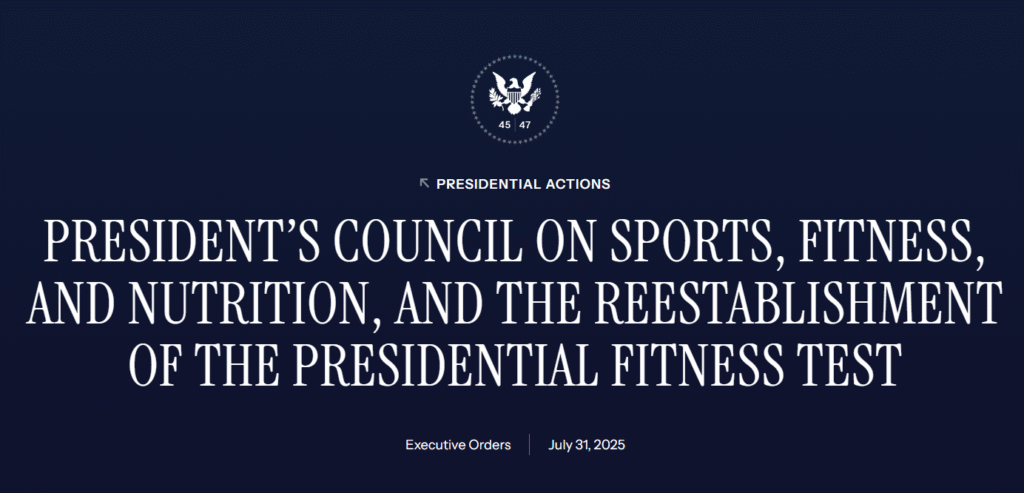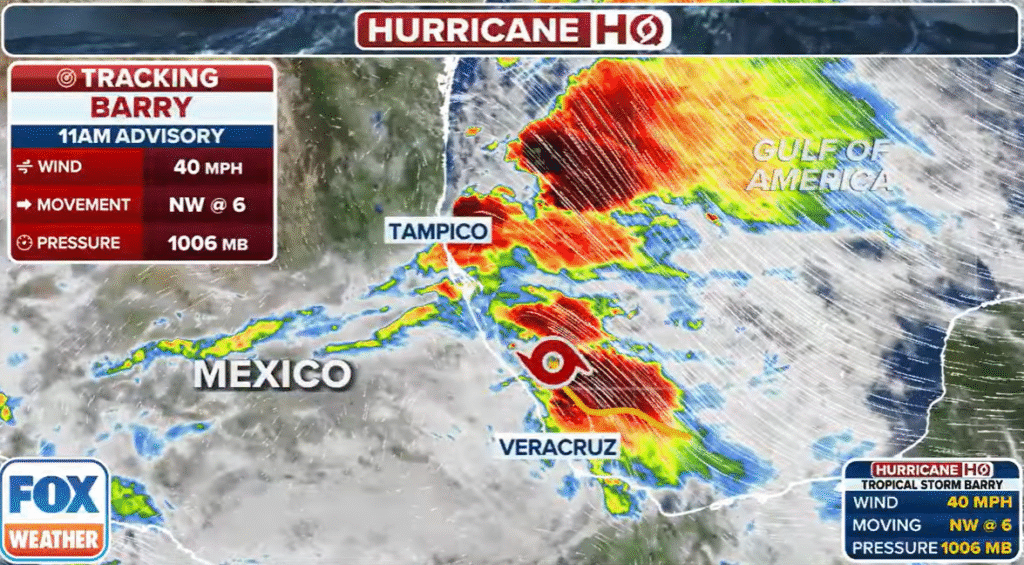
On July 31, 2025, President Donald J. Trump signed an important executive order. This order officially brought back the Presidential Fitness Test. It marks a new chapter in America’s ongoing effort to promote health and fitness among young people. This test was once a beloved part of many American children’s school years. Also, it has now returned to answer growing concerns about the health of today’s youth.
We will explore why this test was needed again. Then, we will look at what the test involves. Next, we will explain what the new executive order includes. Finally, we will look at what this means for America’s future.
Why Was the Presidential Fitness Test Reintroduced?
In recent years, experts and leaders have noticed a worrying trend. Many young Americans are not as active as they used to be. Childhood obesity rates have increased significantly. At the same time, more children suffer from health issues that come from poor diet and lack of exercise.
Furthermore, physical inactivity affects more than just health. It impacts school performance, job readiness, and even military service eligibility. The executive order directly states this connection. It notes that poor fitness affects the U.S. economy and national security. Therefore, the decision to bring back the Presidential Fitness Test sends a strong message. It shows the government’s commitment to reversing these harmful trends.
What Was the Original Presidential Fitness Test?
The Presidential Fitness Test began in the late 1950s. It quickly became part of school culture in the United States. The test aimed to help children measure their physical fitness. It also encouraged young people to stay active.
The test included several physical activities. These activities tested how strong, flexible, and fit the children were. For example, students might do sit-ups, push-ups, pull-ups, and run short distances. The test measured endurance, strength, and flexibility.
Students who performed very well could earn awards. The highest honor was the Presidential Physical Fitness Award. To win this, students had to score in the top 15 percent on all parts of the test. Those scoring in the 50th percentile or above received the National Physical Fitness Award.
Over time, the test became a symbol of healthy living and accomplishment for young Americans.
Why Was the Test Phased Out?
Despite its popularity, the original test ended around 2013. It was replaced by a program called the Presidential Youth Fitness Program. This new program took a more complete look at health. It included exercise routines, healthy eating, and lifestyle habits.
Some experts felt the original fitness test was too focused on competition. Others thought it did not account for differences in children’s abilities. So, the change aimed to be more inclusive.
However, recent health data suggests this approach may not be enough. Rising obesity and illness rates have continued. This concern is one reason the test was reintroduced in 2025.
The 2025 Executive Order: A Closer Look
The executive order signed in July 2025 did several important things. It officially revived the Presidential Fitness Test. At the same time, it gave clear goals and structure to the new program.
Here are the main parts of the order:
- Reestablishing the Presidential Fitness Test
The test would now be managed by the Secretary of Health and Human Services. The Department of Education would help support it in schools. This makes the test a nationwide effort, involving both health and education leaders. - President’s Council on Sports, Fitness, and Nutrition
The order renamed and expanded this council. The council will guide the new fitness test program. It will include up to 30 members. The President appoints these members. They come from sports, education, health, and community groups. - Council’s Responsibilities
The council will advise the President on fitness issues regularly. It will develop strategies to improve youth fitness. This includes recommending ways schools can encourage physical activity and reward students. It will also set new fitness goals that are challenging but achievable. - National Collaboration
The order encourages partnerships. It asks schools, sports organizations, businesses, and nonprofits to work together. Together, they will create more opportunities for children to be active. - Funding and Administration
Members of the council serve mostly without pay. They do receive expenses related to their duties. The Department of Health and Human Services provides logistical and financial support. - Program Duration
The council will operate for at least two years. It may continue longer if the President or Congress approves.
The Role of Public Events and Partnerships
The executive order also highlights big upcoming sports events. These events provide chances to get more people involved in fitness. Some mentioned are:
- Ryder Cup (Golf)
- President’s Cup (Golf)
- FIFA World Cup (Soccer)
- Olympic Games
- The U.S. semiquincentennial (250th anniversary in 2026)
These events help boost national pride and excitement around sports. They also offer role models for young people.
Who Are Some Key Figures Supporting the Program?
At the official White House ceremony, several well-known athletes and entertainers were present. Their presence helps highlight the program’s importance.
- Paul “Triple H” Levesque from WWE is an example. He is famous for his wrestling career and now helps lead content at WWE. His involvement brings attention from younger fans.
- Harrison Butker, a successful NFL kicker for the Kansas City Chiefs, attended too. He is a three-time Super Bowl champion. Butker is known for discipline and hard work—key themes of fitness programs.
- Bryson DeChambeau, a professional golfer and two-time U.S. Open champion, also appeared. DeChambeau is known for his scientific and innovative approach to sports fitness.
Their participation underscores a shared belief: fitness is essential to success in sports and life.
How Will the New Test Work?
While exact details will develop over time, the reestablished test will resemble the original in many ways. Students will take part in physical activities designed to test strength, endurance, and flexibility. Schools will track and report results.
However, the test will also include modern improvements:
- It will aim to be more inclusive. Children with different abilities will have options.
- The focus will be on personal progress, not just competition.
- Schools will get resources to support healthy habits beyond just the test.
- Communities will be encouraged to offer more fitness opportunities.
Teachers and coaches will receive better training. This will help ensure they can support students appropriately.
Why Is This Important for America?
Fitness matters for many reasons. First, it directly improves health. Active children have lower rates of obesity, diabetes, heart disease, and other problems.
Second, fitness supports mental health. Physical activity helps with mood, focus, and confidence. Kids who get active tend to succeed academically and socially.
Third, fitness contributes to national strength. The military depends on healthy recruits. The workforce benefits from active and engaged people. Even the economy gains from a fitter population because healthy people are more productive.
Finally, fitness builds community. Sports and activity bring people together. They teach teamwork, discipline, and respect. These values matter for a strong society.
Bringing back the Presidential Fitness Test sends a message. It says America values health, effort, and achievement.
How Can Schools and Families Get Involved?
The success of this program depends on many people.
- Schools must prioritize physical education. They need to provide time, space, and equipment.
- Teachers and Coaches should support all students. They can help kids set fitness goals and celebrate progress.
- Families play a key role too. Parents and guardians can encourage healthy habits. This means joining kids in physical activity, choosing healthy meals, and making fitness fun.
- Communities can create safe parks, sports leagues, and fitness events.
By working together, these groups create a powerful support system.
What Challenges Might Arise?
Renewing the Presidential Fitness Test won’t be easy. Some schools may lack resources. Others might struggle to find trained staff. Some students could feel pressure or discouragement.
The program’s leaders understand these challenges. The new council will develop solutions. This includes securing funding and creating supportive policies. The emphasis will always be on inclusion and positive encouragement.
Looking to the Future
The Presidential Fitness Test is more than a series of exercises. It is a symbol of commitment. It shows that America cares about its youth and its future.
As the program unfolds, it will adapt and improve. It will inspire new generations to be stronger and healthier.
In the next two years, parents and teachers will see changes in schools. Students will have more reasons and chances to be active. Athletes from all sports will continue to set examples.
This renewed focus on fitness can lead to brighter futures for millions. It can build a stronger, healthier nation.
Conclusion
The return of the Presidential Fitness Test in 2025 marks an important milestone. It recognizes the urgent need to improve youth health. It calls for national effort and unity.
By restoring this test, the government aims to revive a culture of fitness and well-being. The President’s Council on Sports, Fitness, and Nutrition will guide this mission.
With support from schools, families, athletes, and communities, this initiative can succeed. It can help every child reach their fitness potential.
Ultimately, a healthier young generation means a stronger America. The Presidential Fitness Test is one key step on that path.
This article is based on the official executive order signed by President Donald J. Trump on July 31, 2025, and related government releases about the Presidential Fitness Test’s reestablishment.


